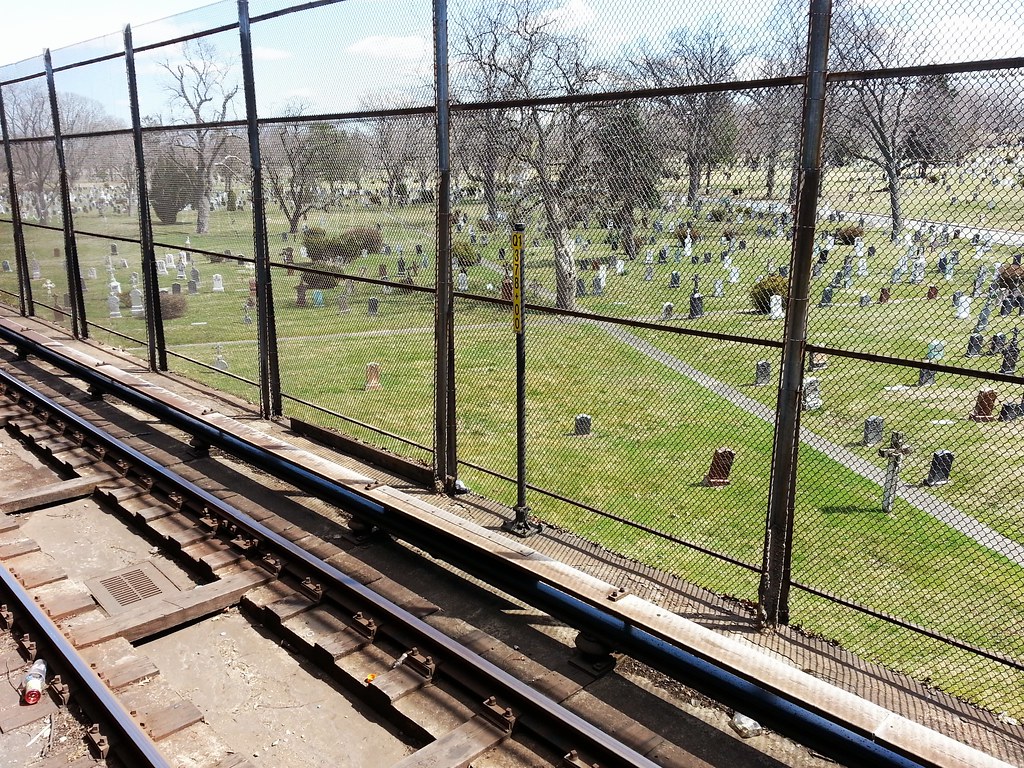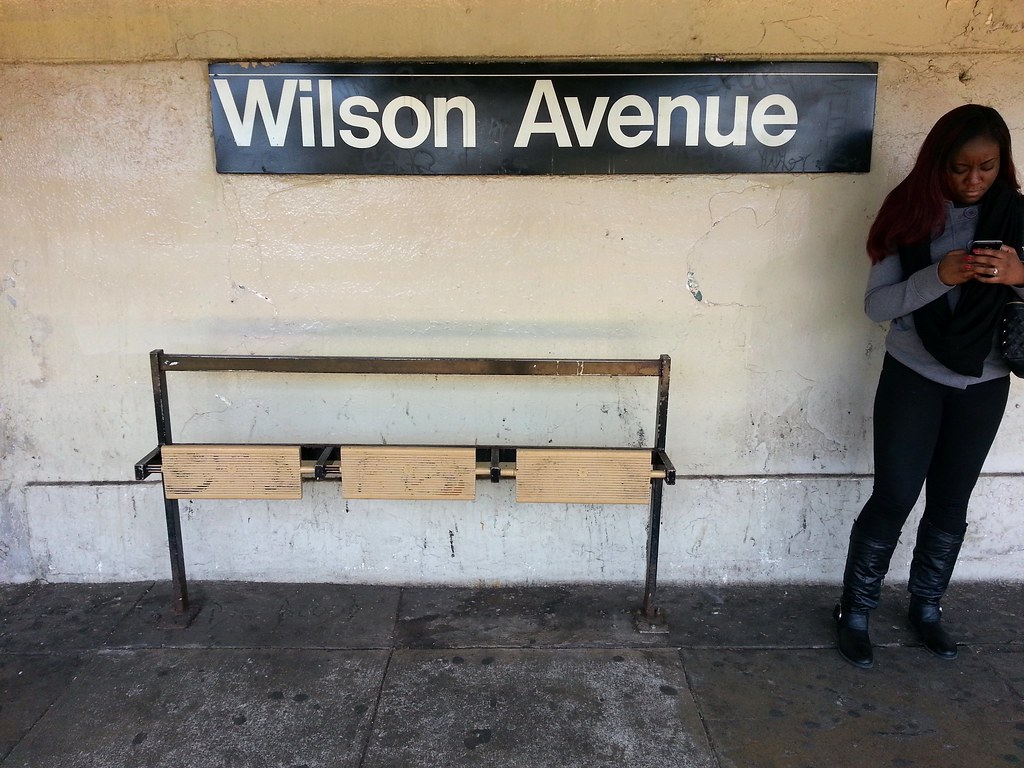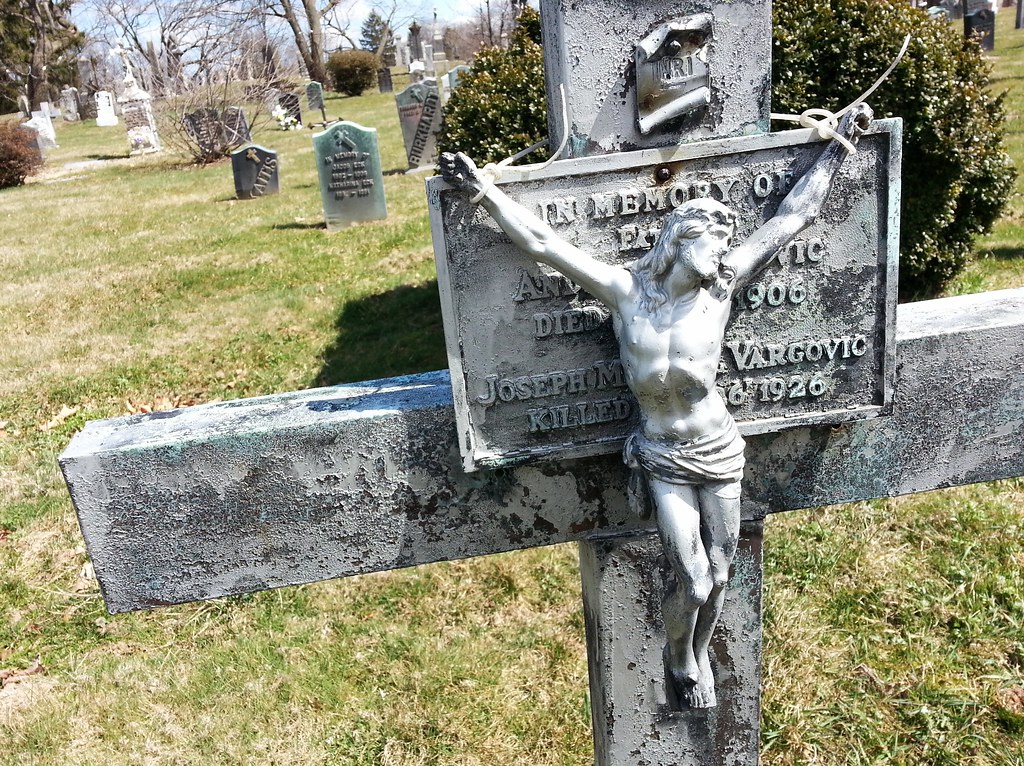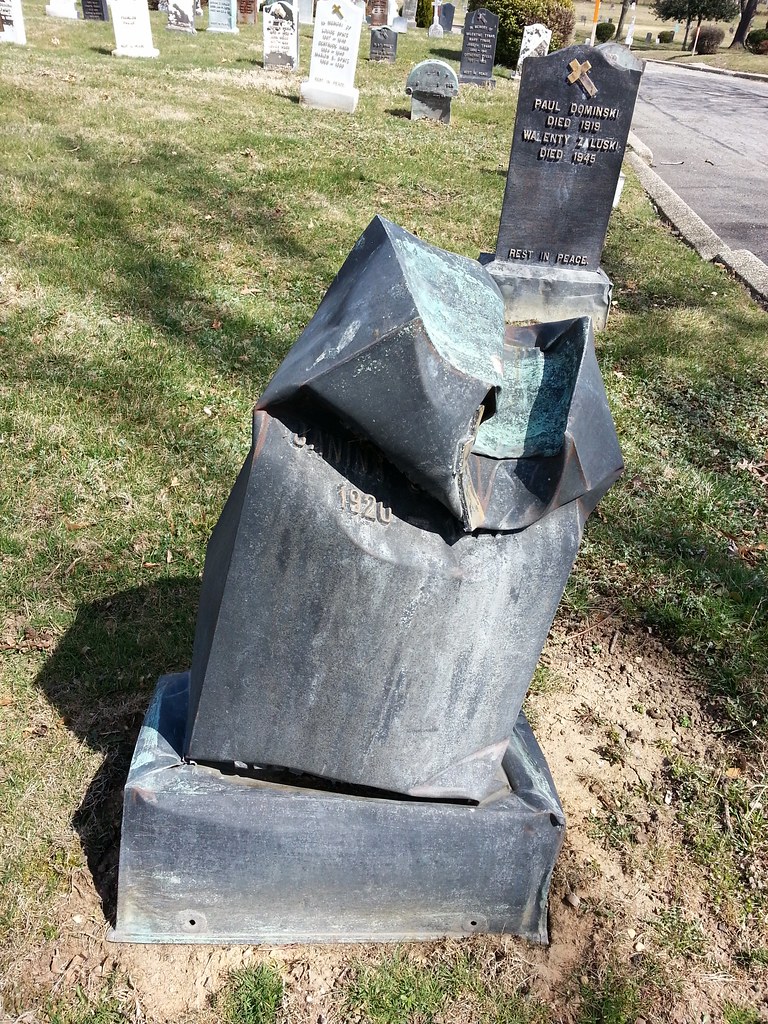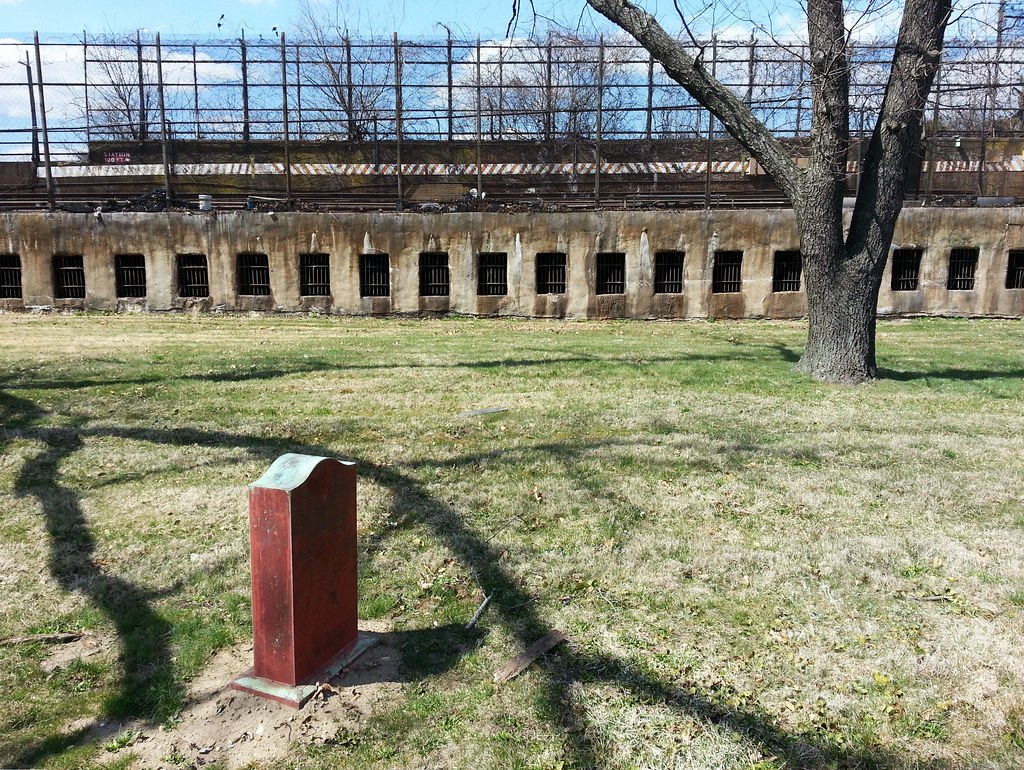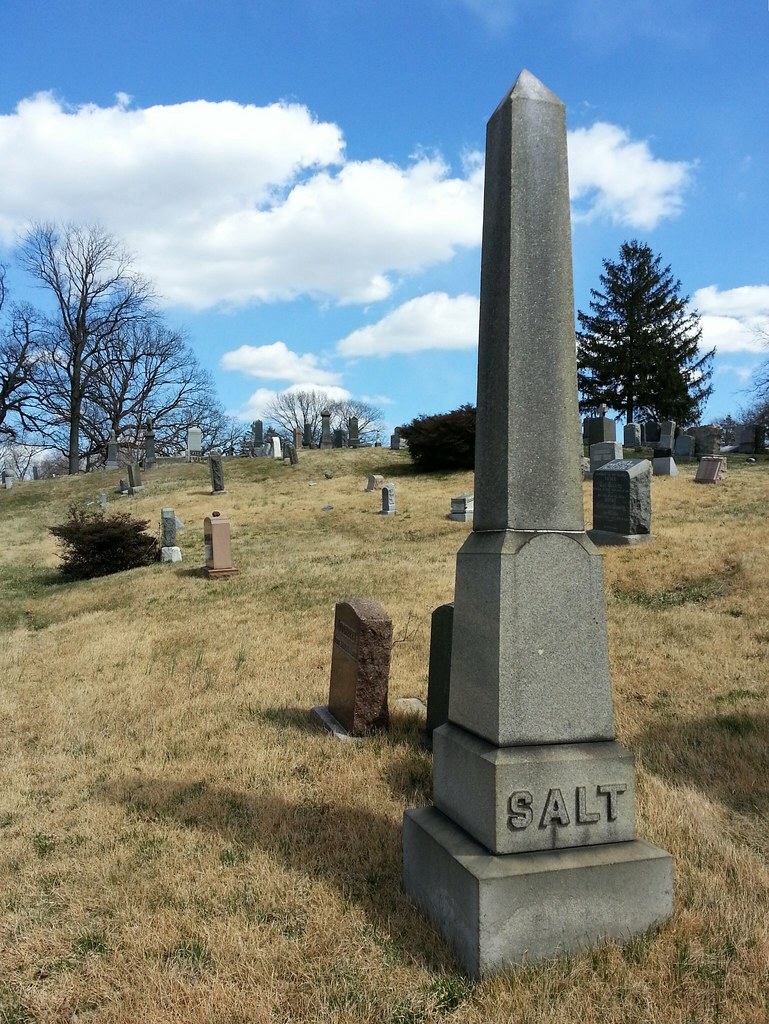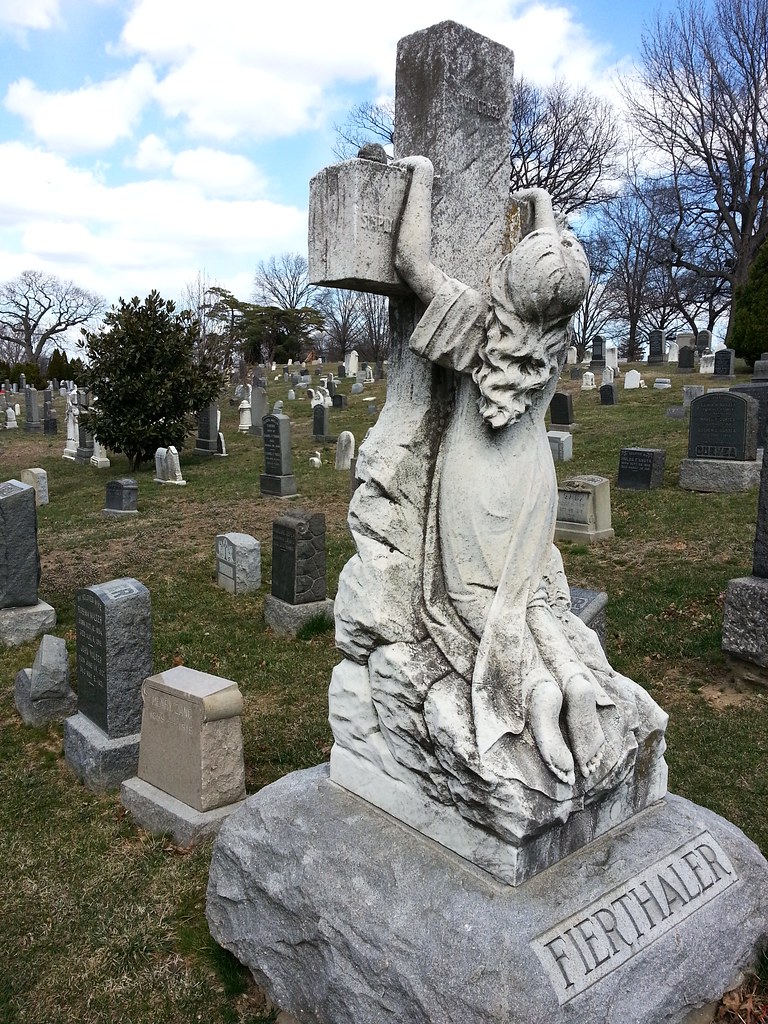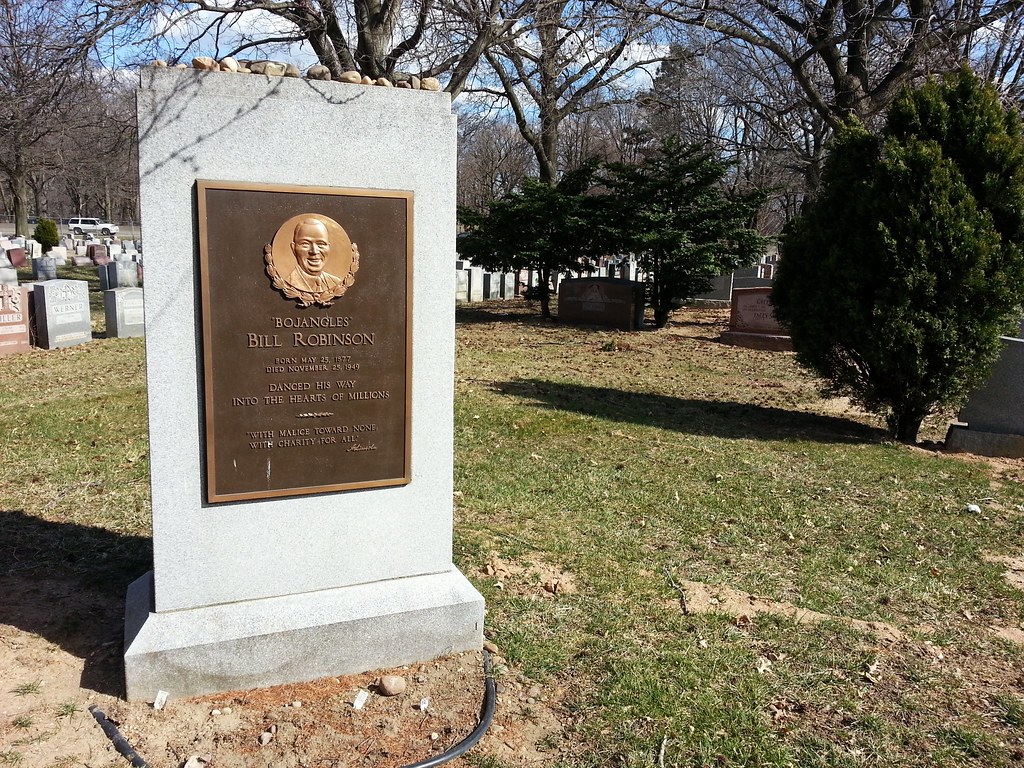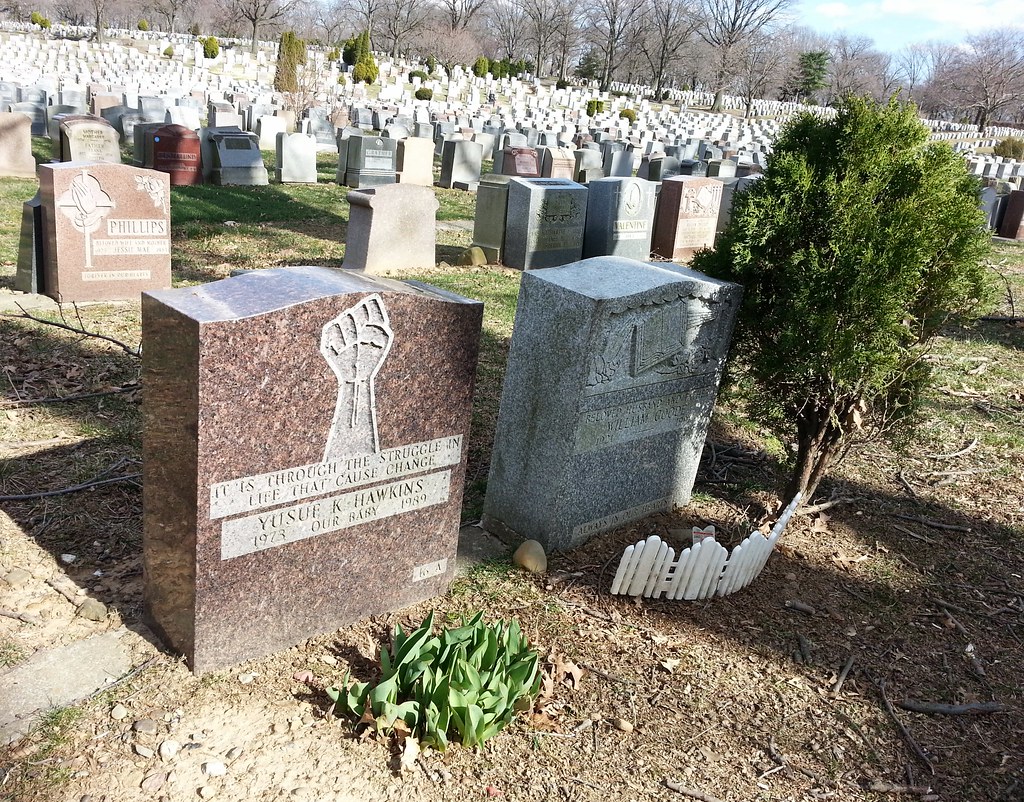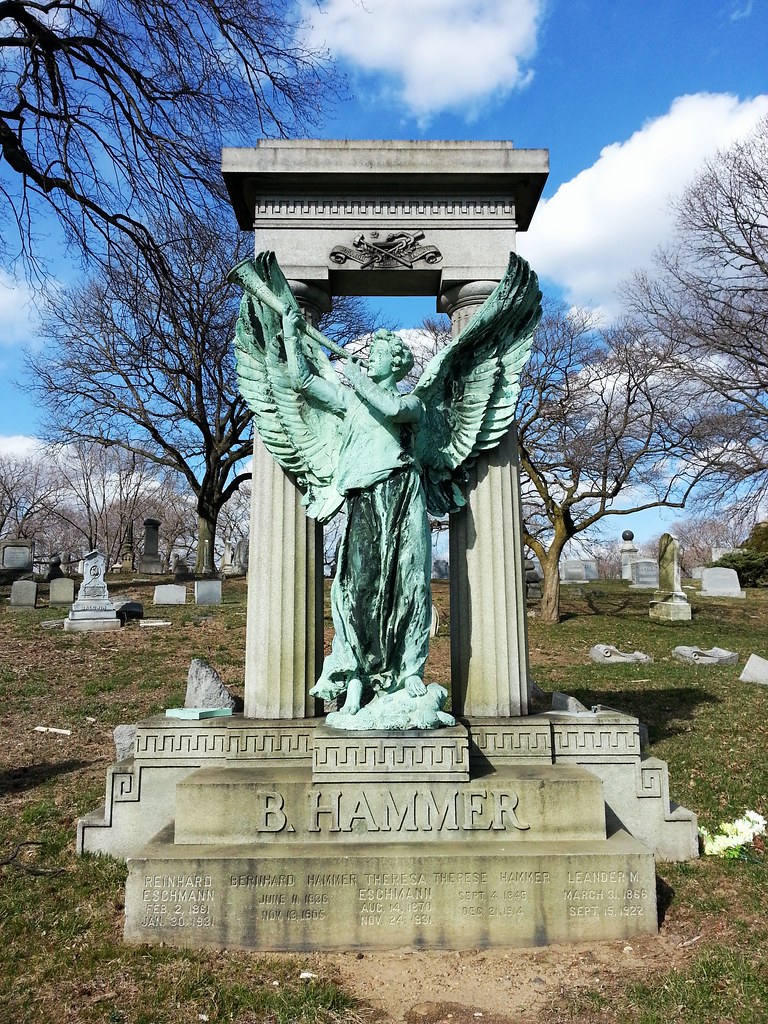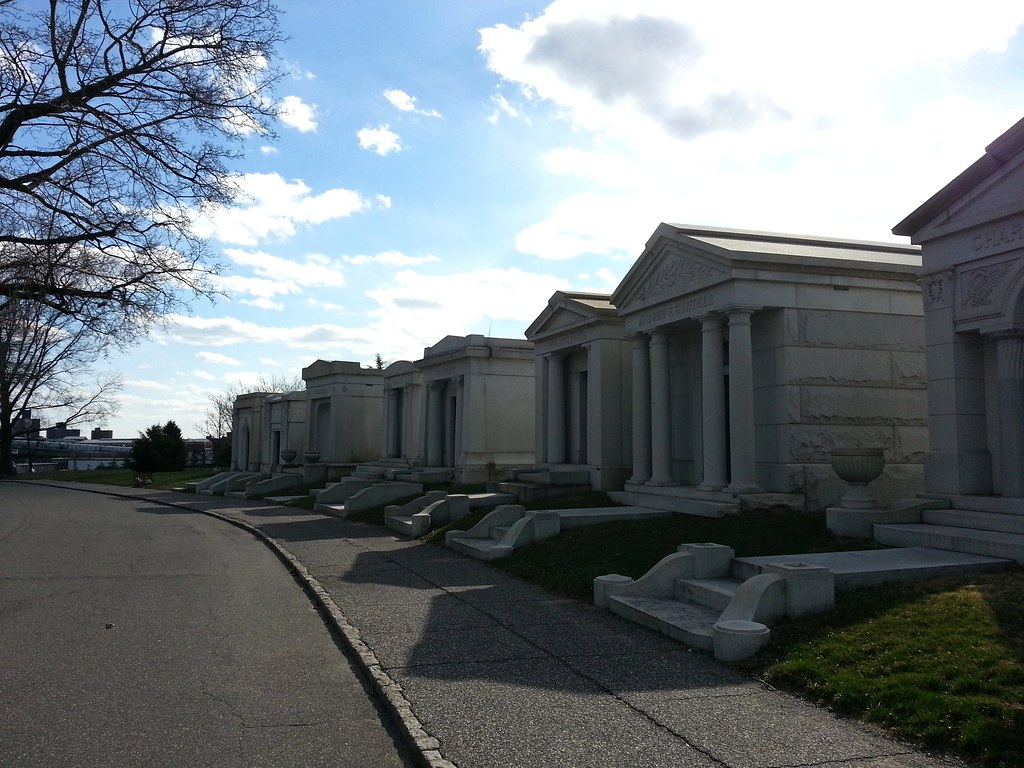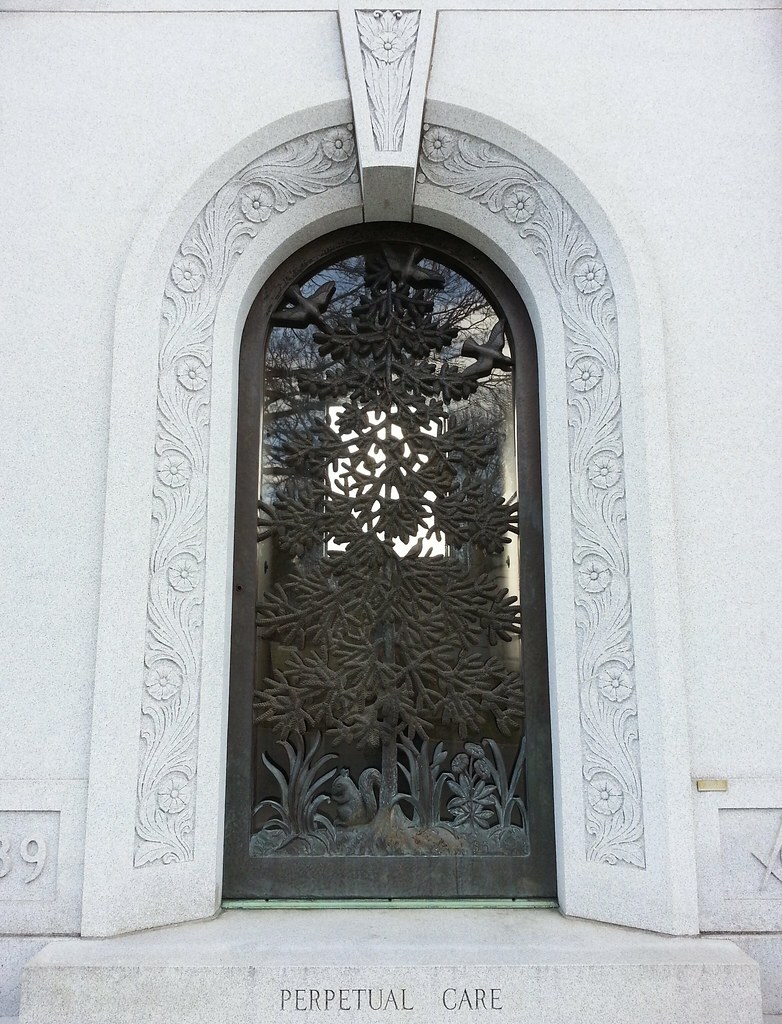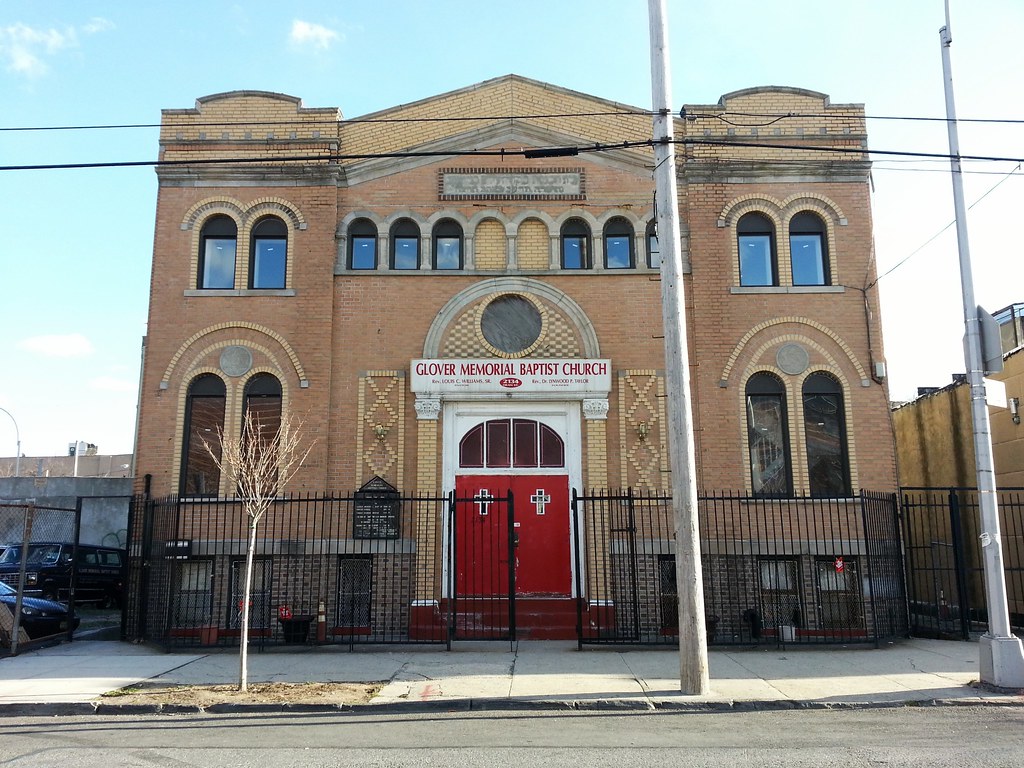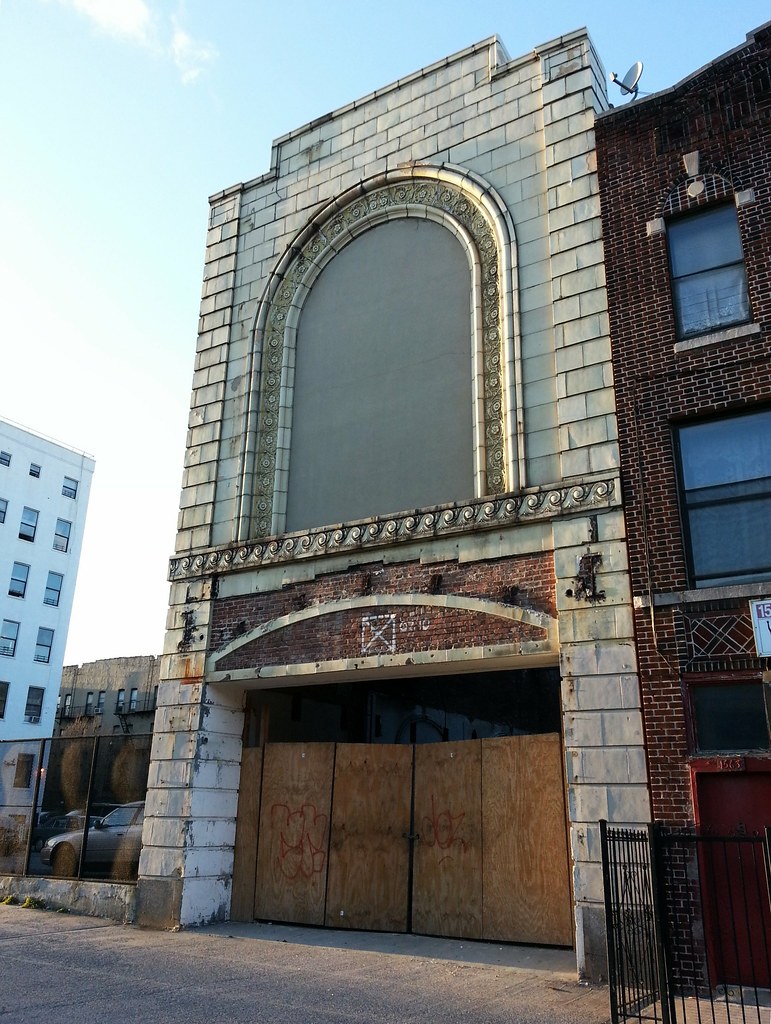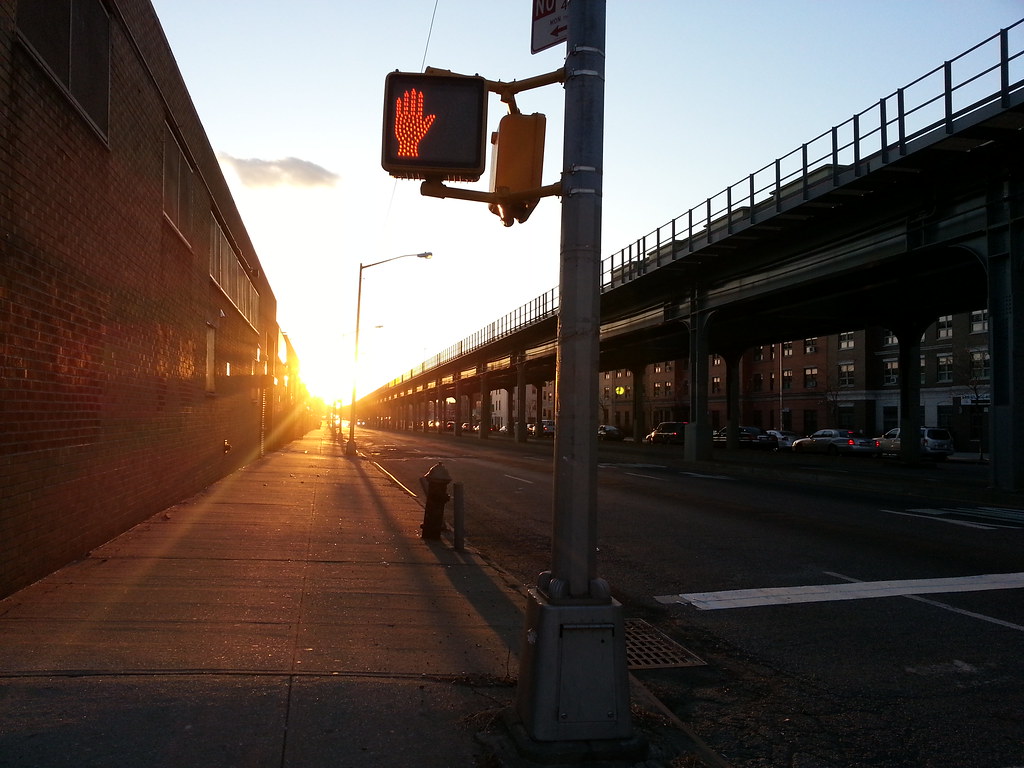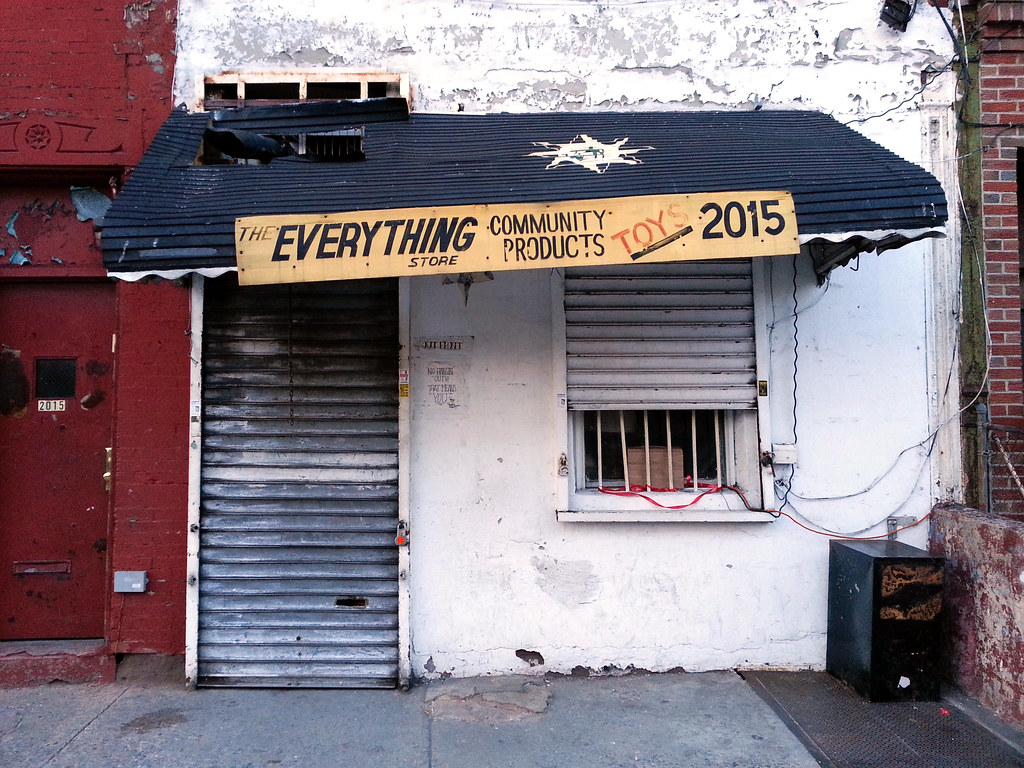

"An interesting feature of the cemetery is that nearly all of its original monuments were made of metal--from the earliest days, stone monuments were not allowed because no distinctions were permitted to be made between the rich and the poor."

Members of the NYPD's mounted unit (a.k.a. "10-foot tall cops"), they were busy having mounds of their waste shoveled up by a human colleague.
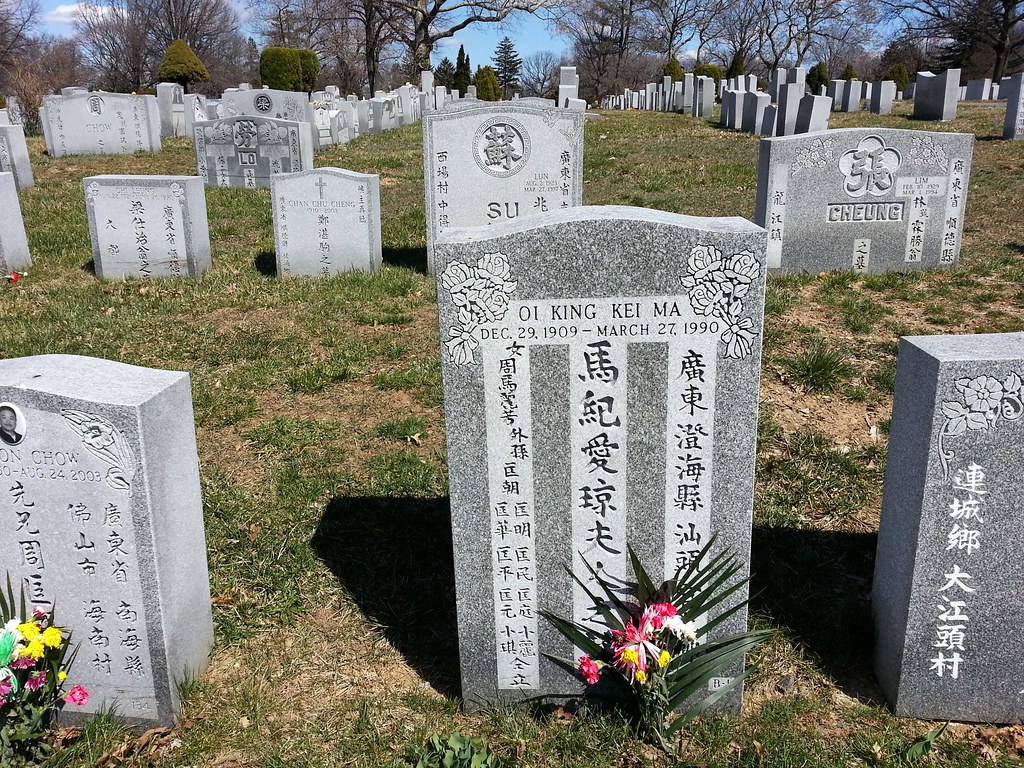
If you've ever spent any time looking at a map of Brooklyn and Queens, you've probably noticed the huge agglomeration of 17 contiguous cemeteries (and a couple of big parks) clustered along the middle of the border between the two boroughs. In order to understand how this area came to be so popular with the dead, we have to start back about 18,000 years or so during the Wisconsin glaciation...
It was around this time that the Laurentide ice sheet began its final retreat from Long Island, leaving behind the massive ridge of glacial debris it had been pushing in front of it. Known as the Harbor Hill Moraine, this ridge forms a hilly spine that runs lengthwise across Long Island and through the Brooklyn-Queens borderland where the cemeteries mentioned above are located. (Here's a map of the region's moraines.)
Fast forward to 1847, when the New York State Legislature passed the Rural Cemetery Act, which established the commercial cemetery industry in the state. It paved the way for a proliferation of large cemeteries outside of Manhattan, particularly in parts of western Queens that, while conveniently located only a few miles from the city center, were still quite sparsely populated at the time. Supposedly, the rocky land along the Harbor Hill Moraine was particularly appealing to cemetery developers because it was difficult to build on and thus relatively cheap.
This is just speculation on my part, but it seems like the moraine's hilly topography would also have been a draw, since the rural cemeteries of those days were intended to be beautiful, park-like spaces. (As we learned previously, Brooklyn's Green-Wood Cemetery once rivaled Niagara Falls as a tourist destination.)
The Rural Cemetery Act prohibited a cemetery corporation from acquiring more than 250 acres in any one county. Purchasing land that spanned the border of Kings (Brooklyn) and Queens Counties would have allowed for larger single tracts of cemetery than would otherwise have been permissible. This is often cited as a reason that so many cemeteries are located in this area. None of the individual cemeteries, however, occupy more than 250 acres — in fact, the total area of all of them is less than 1000 acres — so I don't think that theory holds water. Unless perhaps a couple of larger tracts were originally purchased by speculators who then divided them into smaller parcels for resale.
The Evergreens Cemetery, above, opened in 1849 with plots on both sides of the county line. At 225 acres, it's one of the two largest cemeteries in the area, the other being Cypress Hills Cemetery, a fellow border straddler.
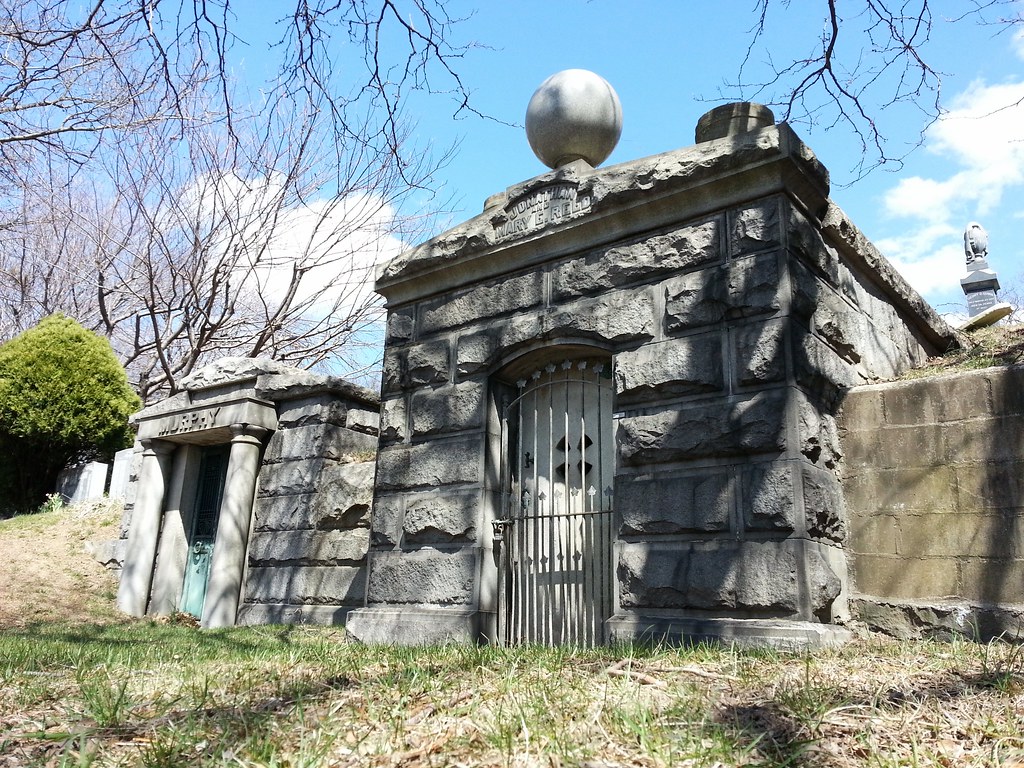
Every day for a decade or so, Jonathan Reed visited the tomb of his late wife Mary here at the Evergreens Cemetery. The hours he spent with her were limited only by the opening and closing times of the cemetery. He furnished the mausoleum like a living room, hung paintings on the walls, and installed an oil stove for warmth. He ate all his meals here, was often visited by friends, and even held conversations with Mary, who he believed was still alive.
Mr. Reed was found unconscious and near death at his wife's side one day in 1905. According to the NY Times's report: "The story of Mr. Reed's devotion to the memory of his wife has long been one of the topics of the section of the city in which he has lived so long. He always appeared to be very happy."
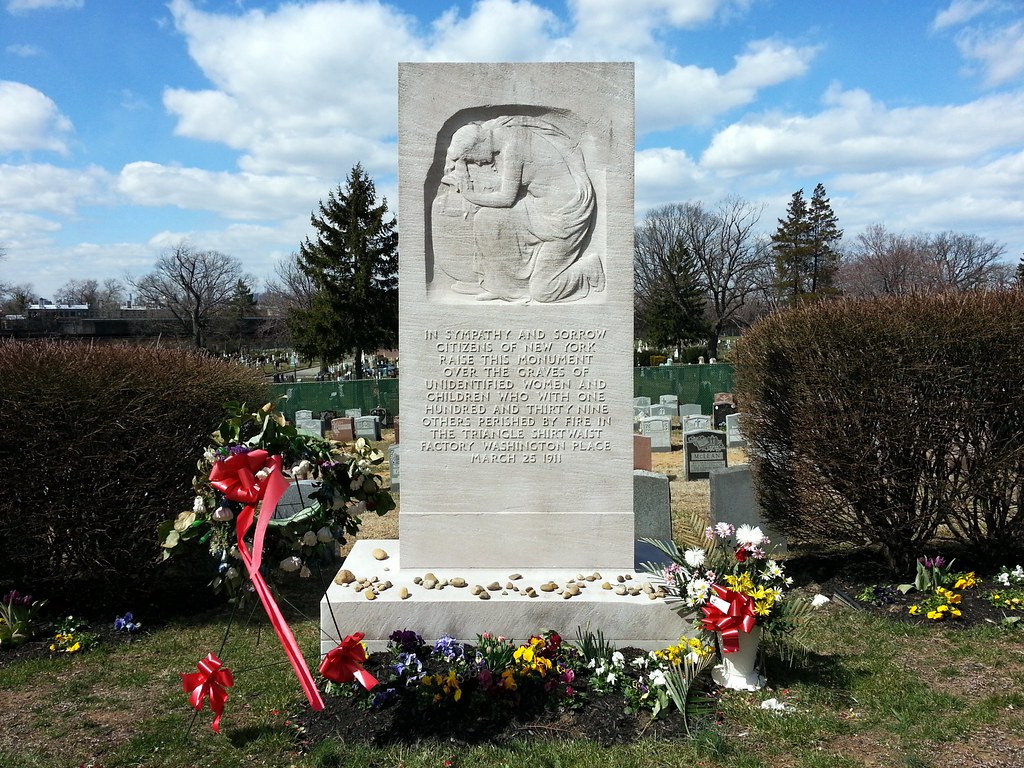
Remembering the victims of NYC's deadliest industrial disaster
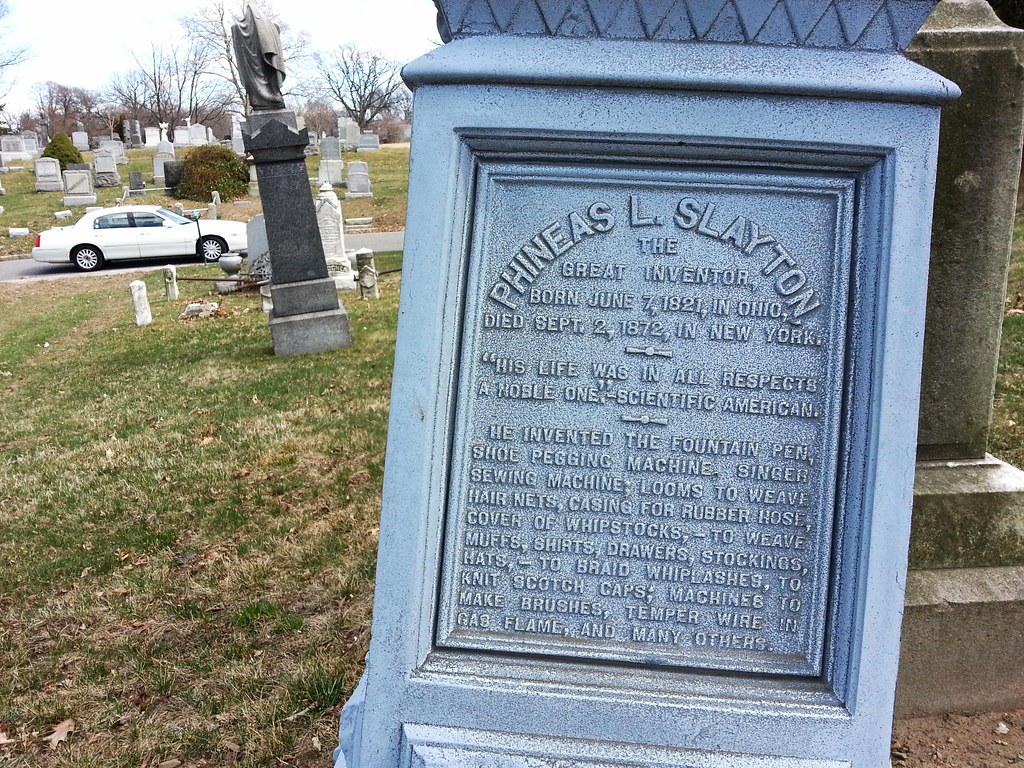
"Phineas had been poor like most inventors . . . he was good natured — had no ability to accumulate money as others had from his many inventions, upon which he studied continually."

Largely forgotten today, this portly comedian achieved international stardom during the silent-film era. From his 1915 obituary in the NY Times:
It was with the coming of the movies that Mr. Bunny's fame became universal, till at the time of his death his face was one of the best known in the world. . . . He had grown exceedingly heavy — he weighed 260 pounds — and as he was beneath the average height his figure immediately suggested the comic. His face, in keeping with his pudgy body, was round and puffy, with little gimlet-hole eyes that peered out from their depths in a kindly, humorous way. It was a mobile face that broke into ripples when Mr. Bunny laughed.A few days after his death, the Times ran this piece by the poet Joyce Kilmer praising Mr. Bunny's artistry and defending him against his critics. Here are some of my favorite excerpts:
As to John Bunny's success being due to his fatness, that criticism is generally made by people who never saw "Autocrat of Flapjack Junction" or "Love's Old Dream," or by rival actors.If you'd like to see Mr. Bunny in action, you can find a few of his films posted on YouTube. Sadly, however, The Autocrat of Flapjack Junction is not among them.
If fatness alone was the source of his success, how crowded his profession would now be!
No, people did not laugh at John Bunny because he was fat, or because he fell from horses and automobiles and aeroplanes, and submitted to various picturesque forms of assault and battery for their amusement. They laughed at him because he was fat humorously, because he fell from vehicles humorously, because he was a great clown — that is, a master of a difficult and important branch of dramatic art.
The written word sometimes loses its power to bring laughter as the years roll by. Topical allusions, phrases, and sentiments that amuse us will bring no mirth to the hearts of our grandchildren. But there are certain things that are elementally funny, that make all people laugh who have any laughter in their souls. And one of these things is the face of John Bunny.
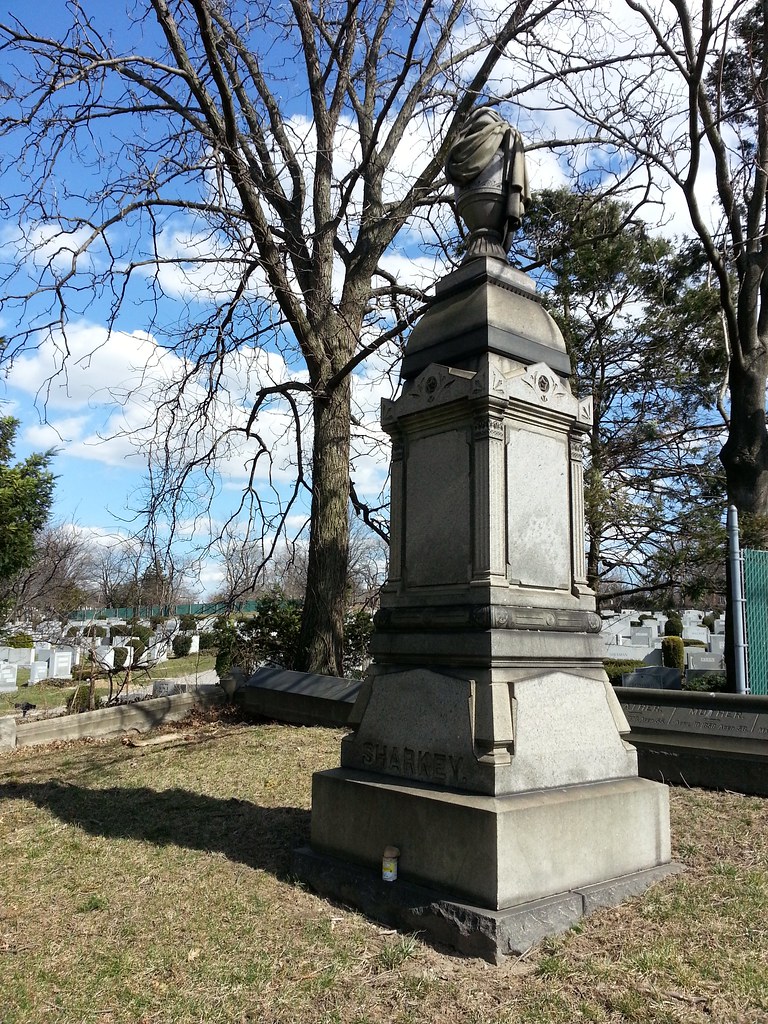
The cemetery map offers the following description of what it calls "Sharkey's Corner": "Imposing Monument built by a grieving father. There are no inscriptions."
The only thing I can turn up on the web is this record at findagrave.com:
SharkeyThere was, however, one clue to be found on the scene. Let's take a closer look at that cylindrical object lurking in the monument's shadow...
Birth: unknown
Death: unknown
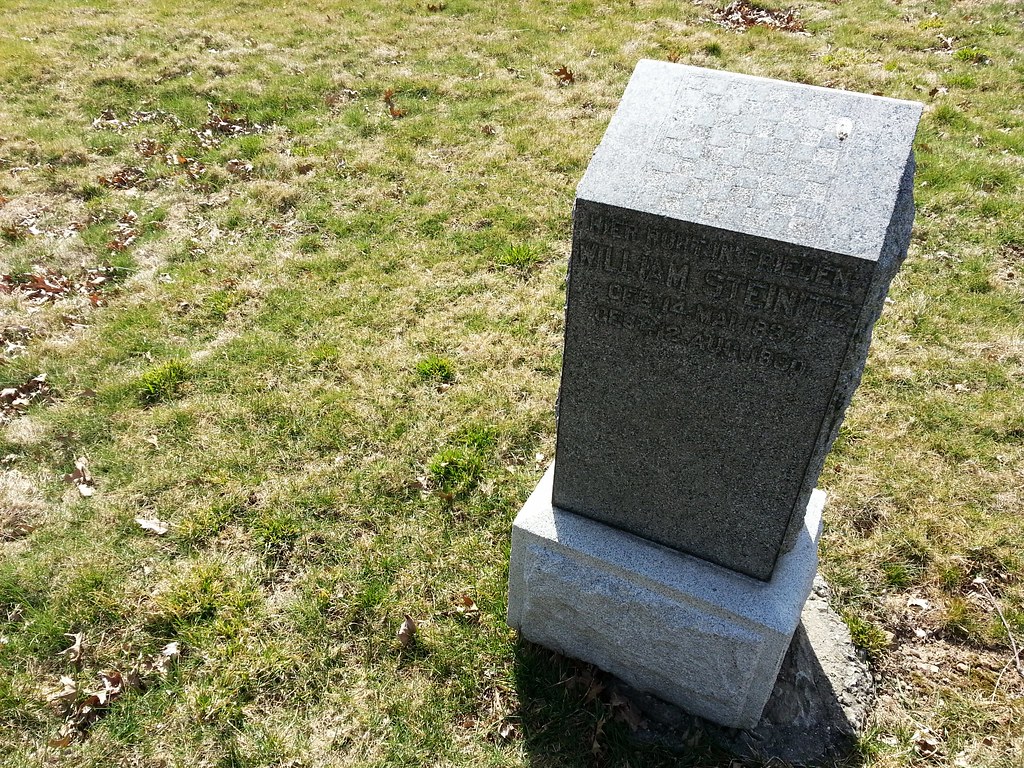
The first undisputed world chess champion. (If you look closely, you can see a chess board on top of his gravestone.) From his 1900 obituary in the NY Times:
William Steinitz, who for years was the champion chess player of the world, died Sunday afternoon in the Manhattan State Hospital, on Ward's Island. For months he had been insane. The last few years of his life were especially tragic. After being recognized as the most expert chess player of the world for over twenty years, he met his defeat at the hands of Lasker, a comparatively young man.
This defeat was his undoing, and since early in 1894 he had not been himself.
His mental condition had not been of the best since then, and after his second meeting with Lasker, at Moscow, Russia, in 1897, where he again met defeat, his decline was rapid.
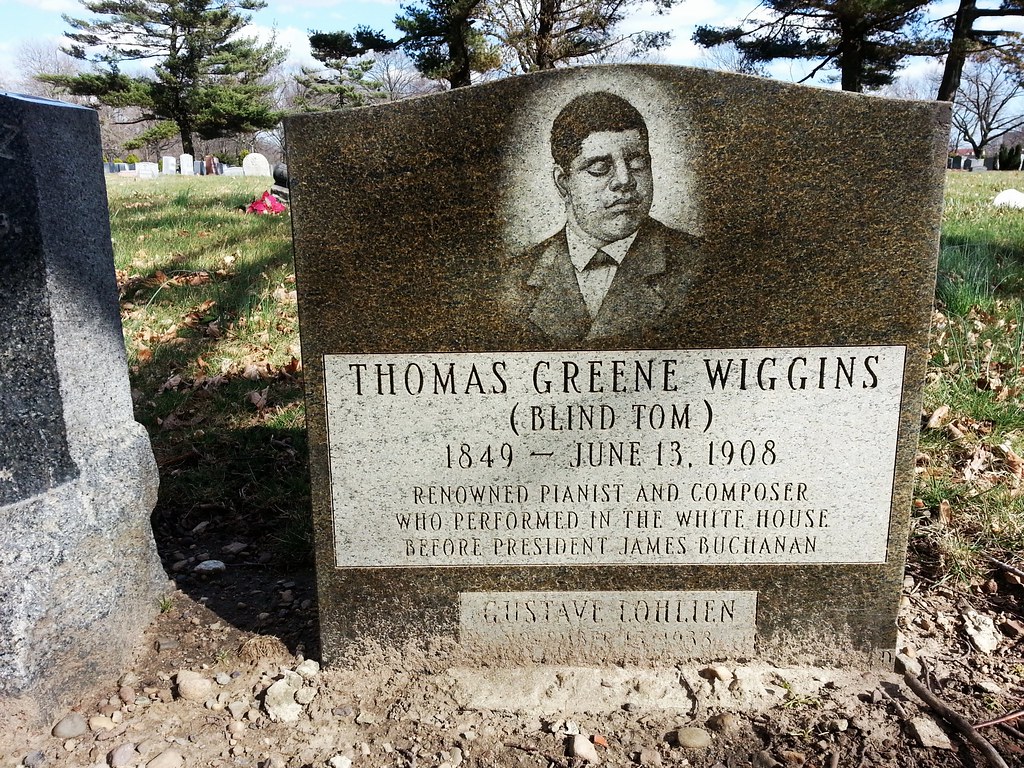
A sightless musical savant born into slavery in 1849, Blind Tom had an amazing ability to mimic any sound he heard, whether vocally or on the piano. Billed as something of a circus freak, he was put on tour by his owner for many years. Mark Twain attended a few of his performances, recalling:
If ever there was an inspired idiot this is the individual. . . . Every time the audience applauded when a piece was finished, this happy innocent joined in and clapped his hands, too, and with vigorous emphasis. It was not from egotism, but because it is his natural instinct to imitate pretty much every sound he hears. When anybody else plays, the music so crazes him with delight that he can only find relief in uplifting a leg, depressing his head half way to the floor and jumping around on one foot so fast that it almost amounts to spinning . . . And when the volunteer is done, Tom stops spinning, sits down and plays the piece over, exactly as the volunteer had played it, and puts in all the slips, mistakes, discords, corrections, and everything just where they occurred in the original performance! He will exactly reproduce the piece, no matter how fast it was played or how slow, or whether he ever heard it before or not. The second night that I attended, two musical professors sat down together and played a duet, which they had composed themselves beforehand for the occasion. It was wonderfully tangled and complicated, wonderfully fast in movement, and was bristling with false notes. In the midst of it "Yankee Doodle" was interpolated, but so mutilated with intentional discords that one could not help writhing in his seat when they rattled it off. The bass was a brilliant piece of complication, and fitted the composition about as well as it would have fitted any other tune — just about. When the piece was finished, Tom stopped spinning and took the treble player's place alongside the bass performer, and clattered it furiously through, with his nose in the air, and never missed a note of any kind; and when he faithfully put in the ludicrous discords in "Yankee Doodle," the house came down. Then the treble man came back, and Tom took the wonderful bass and played it perfectly.Tom also composed many songs of his own, including musical translations of a sewing machine and a rainstorm. You can hear the latter being played by a modern-day pianist here.
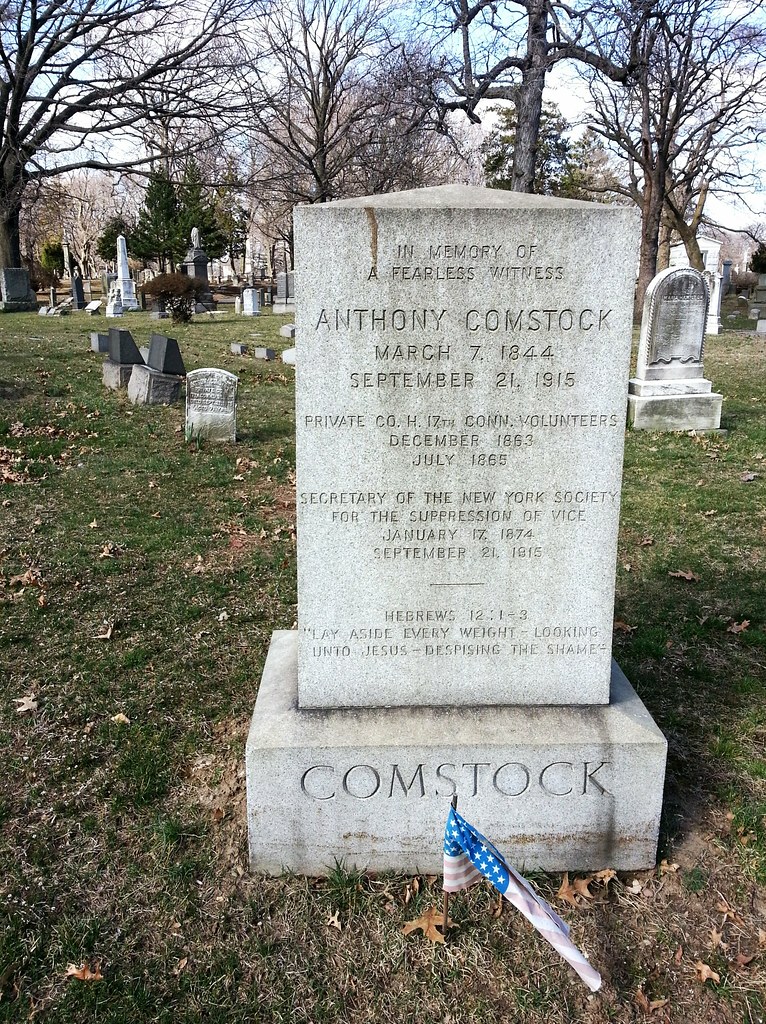
As head of the New York Society for the Suppression of Vice, the crusading, book-burning Mr. Comstock deemed himself the country's foremost guardian of public morality for more than four decades during the late 19th and early 20th centuries. He advocated — and, as a postal inspector with power of arrest, often enforced — the banishment from society of anything his puritanical mind considered indecent (ranging from classic works of literature to information about birth control and birth control devices), with much of his authority springing from a sweeping piece of anti-obscenity, anti-contraception, anti-abortion legislation known as the Comstock Act (full text here, starting at the bottom of the page) that he successfully lobbied Congress to pass in 1873.
In a 1915 letter to the NY Times, the screenwriter and author Daniel Carson Goodman, himself a victim of Comstockery (which George Bernard Shaw described as "the world's standing joke at the expense of the United States . . . confirm[ing] the deep-seated conviction of the Old World that America is a provincial place, a second-rate country-town civilization after all"), eloquently wrote:
If an author feels himself justified in spending a year or two in trying to present life truthfully, it surely is not within the province of one man to suppress his power of expression and his work, to convert the author into a tea-side platitudinizer, and to terrorize the publishers so that through self-defense they must make war upon every manifestation of honest artistic striving. For forty years Mr. Comstock has had practically the power of limiting the reading matter of the American public to his own standard of literary appreciation. That is a long time to have the power of annoying honest publishers and authors, especially when they have no redress under the present law. Aiming ostensibly at what was to him moral degradation and the cause of sensorial metabolism, he has been permitted to crush under his falsely emblazoned shield what was to other people truth and beauty.
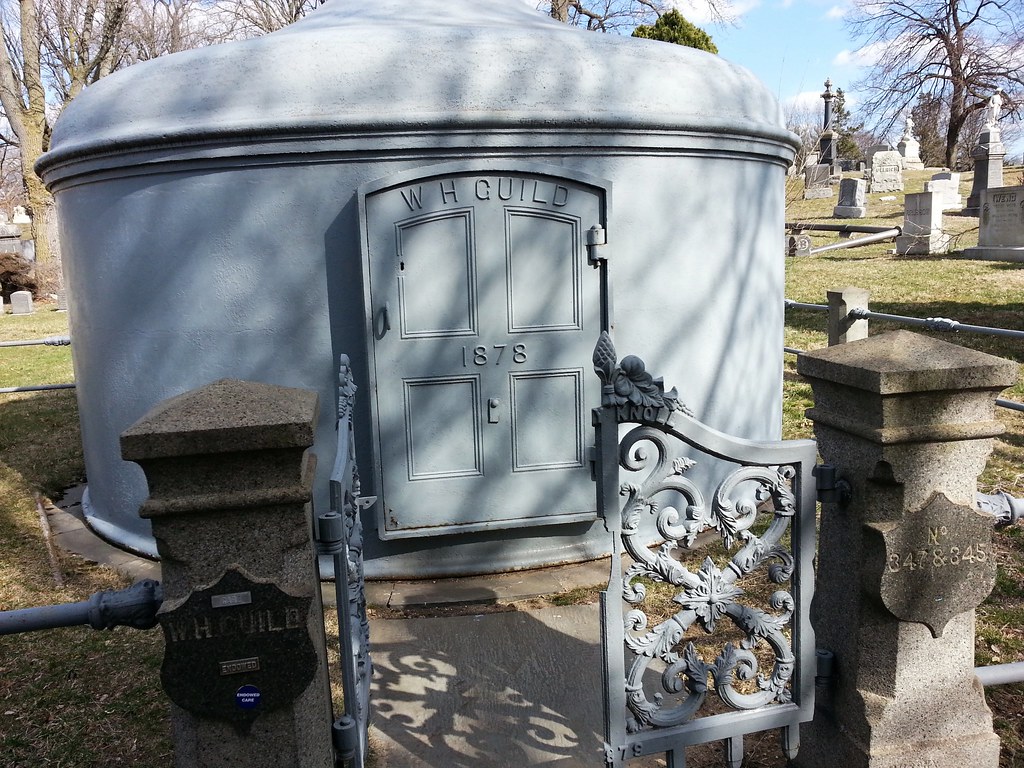
Depending on your source, this tomb was originally either a gun turret or a boiler from a ship.
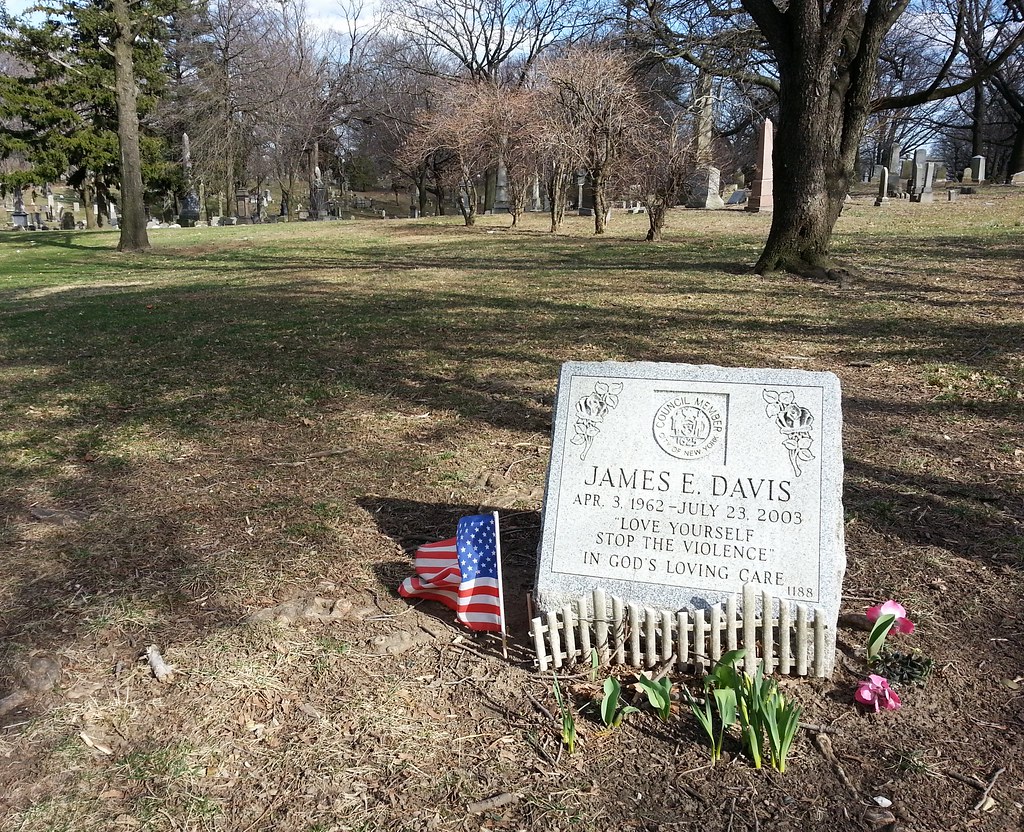
In 2003, this city councilman was shot to death by a political rival/protégé (who was subsequently shot and killed by a police officer) in the Council chamber at City Hall, just minutes before the start of a session in which Mr. Davis planned to introduce a resolution focused on preventing workplace violence. He was originally buried in Green-Wood Cemetery, but his remains were moved here to the Evergreens after his family discovered that his killer's ashes had been placed in Green-Wood as well.
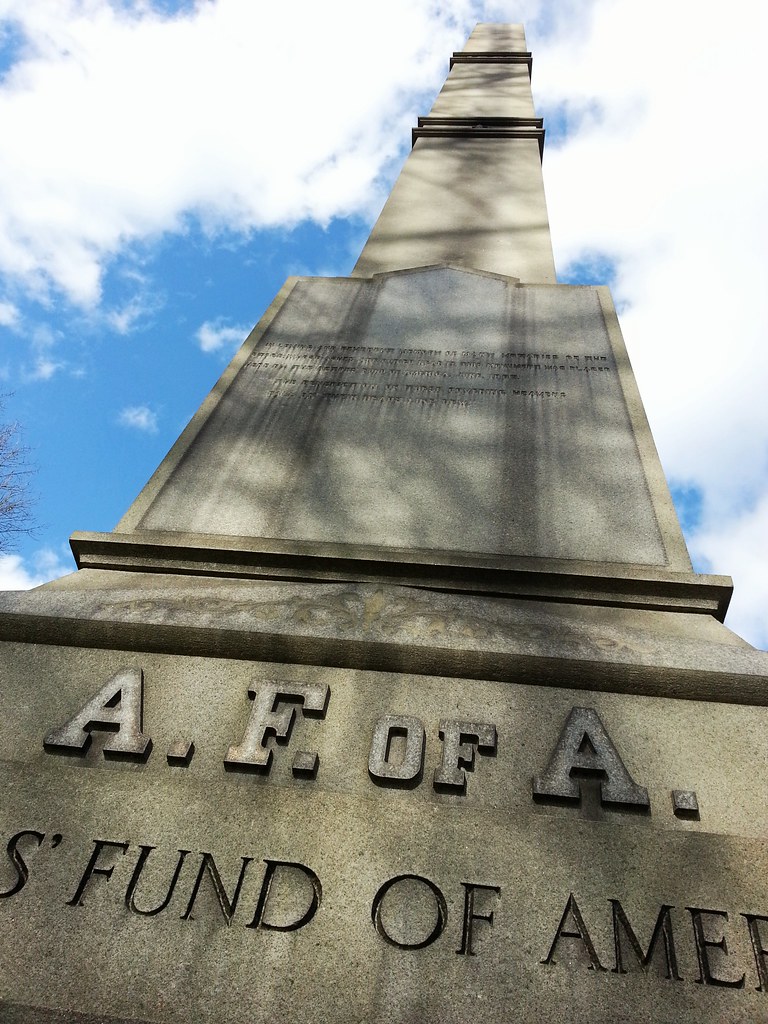
The Actors Fund of America has a burial section here at the Evergreens. Among the many impoverished entertainers whose ashes have been interred here is the Australian-born Sylvia Willes. After she died in 1917, the NY Times wrote:
She weighed exactly 19¾ pounds and stood 25½ inches high, just big enough to permit her to have photographs taken for advertising purposes while standing in the palm of a man's hand.
Mrs. Sarah Willes, the "Princess's" mother, said last night at the Hotel Gerard that during her daughter's stage experience in this country, at home, and in South Africa, she amassed approximately $250,000 in salaries for performances and royalties from her picture postal cards, but this had been dissipated through mismanagement.

In case you were wondering, the face value of a pound of pennies is anywhere between $1.46 and $1.81. (The weight of the penny has fluctuated over time.)

New affordable housing in Brownsville. As I was taking this photo, a guy behind me yelled out: "You can't live there — you make too much money!" (He's right that I can't live here, but the maximum income limit certainly has nothing to do with it.) Later in the day, I was asked on two occasions if I was planning to buy a building that I was photographing. I must be the most patrician-looking hobo this side of the bean fields.

This is the church — visible in the previous photo — for which the adjacent apartments are named. (The apartments were built on the former site of the parish school.) Because of dwindling attendance, the church was shuttered in 2008, and it came close to being demolished in 2010 before local activists supposedly convinced the Diocese of Brooklyn to convert it into a community center instead (although it doesn't appear that any progress has been made on that front). You can see an awesome 360° view of the interior here.
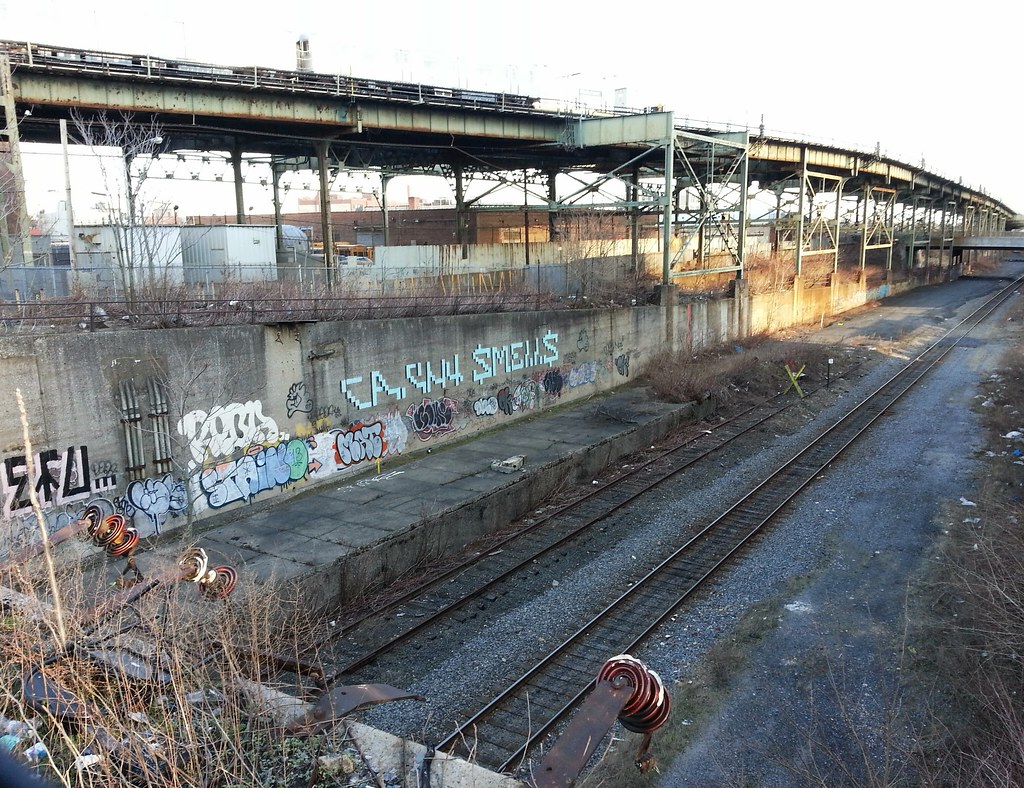
Standing atop the entrance to the East New York tunnel, we can see the depressed Bay Ridge Branch and the elevated Canarsie Line continuing their journey south together.
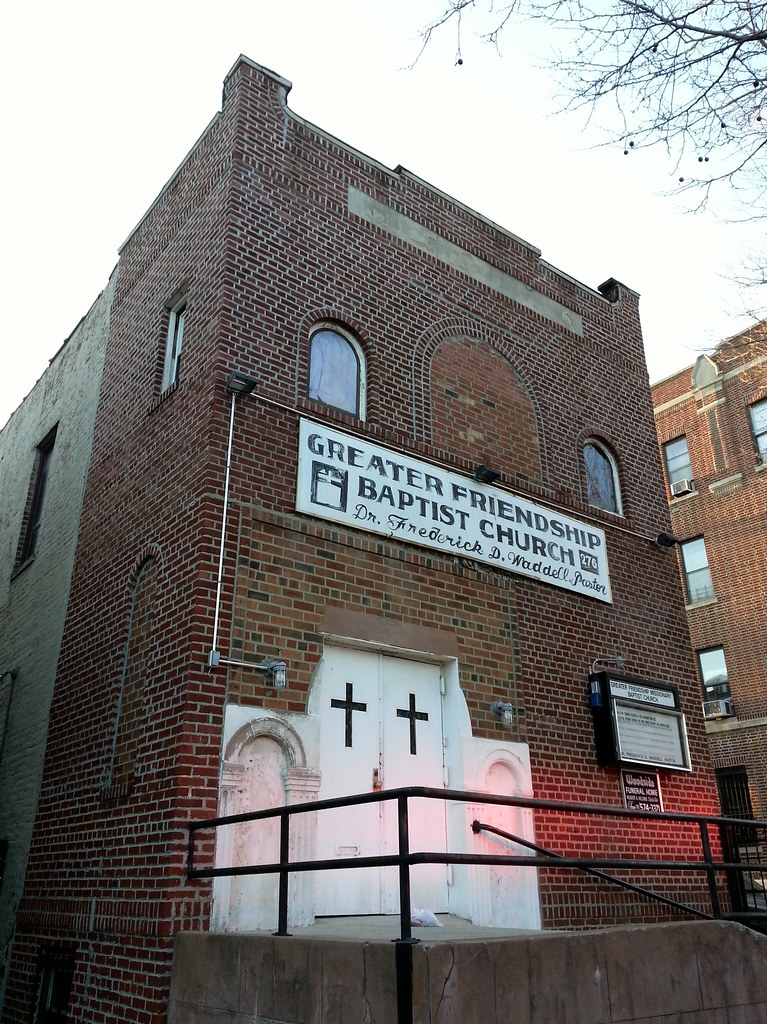
This one's past is pretty well concealed, but the architecture and the covered-over inscription at the top of the building are good clues that it was originally a synagogue. (Here's where you can confirm such hunches. Just look up this address — 276 Buffalo Avenue.) Apparently, the church across the street used to be a synagogue as well, but it doesn't have any of the tell-tale signs (or at least none of the ones I'm familiar with).

